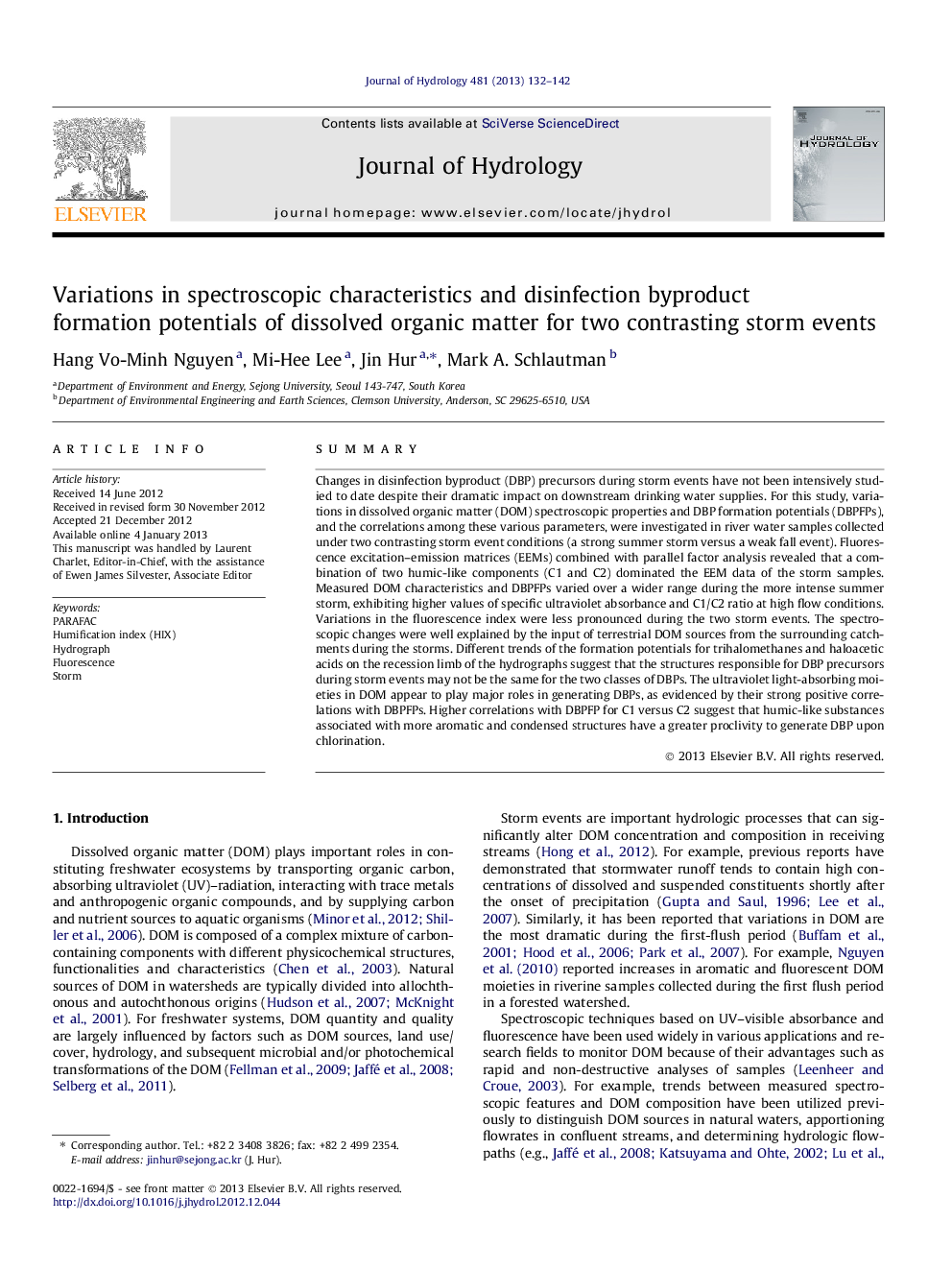| Article ID | Journal | Published Year | Pages | File Type |
|---|---|---|---|---|
| 4576482 | Journal of Hydrology | 2013 | 11 Pages |
SummaryChanges in disinfection byproduct (DBP) precursors during storm events have not been intensively studied to date despite their dramatic impact on downstream drinking water supplies. For this study, variations in dissolved organic matter (DOM) spectroscopic properties and DBP formation potentials (DBPFPs), and the correlations among these various parameters, were investigated in river water samples collected under two contrasting storm event conditions (a strong summer storm versus a weak fall event). Fluorescence excitation–emission matrices (EEMs) combined with parallel factor analysis revealed that a combination of two humic-like components (C1 and C2) dominated the EEM data of the storm samples. Measured DOM characteristics and DBPFPs varied over a wider range during the more intense summer storm, exhibiting higher values of specific ultraviolet absorbance and C1/C2 ratio at high flow conditions. Variations in the fluorescence index were less pronounced during the two storm events. The spectroscopic changes were well explained by the input of terrestrial DOM sources from the surrounding catchments during the storms. Different trends of the formation potentials for trihalomethanes and haloacetic acids on the recession limb of the hydrographs suggest that the structures responsible for DBP precursors during storm events may not be the same for the two classes of DBPs. The ultraviolet light-absorbing moieties in DOM appear to play major roles in generating DBPs, as evidenced by their strong positive correlations with DBPFPs. Higher correlations with DBPFP for C1 versus C2 suggest that humic-like substances associated with more aromatic and condensed structures have a greater proclivity to generate DBP upon chlorination.
► Measured DOM characteristics and DBPFPs varied to a greater extent for more intense storm. ► PARAFAC results revealed that a combination of two humic-like components dominated the EEM data of the storm samples. ► Spectroscopic changes were well explained by the input of terrestrial DOM sources during the storms. ► There were different trends of the formation potentials for THMs and HAAs on the recession limb of the hydrographs. ► UV-absorbing DOM moieties appear to play major roles in generating DBPs during the storms.
